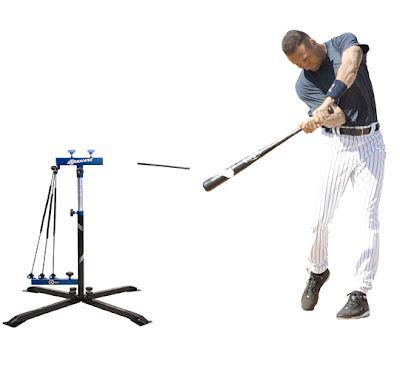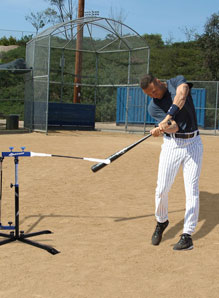By Nick Dixon
The word is PLAN
There are many four letter words that baseball coaches know, but few are as important as the word for today, PLAN. There are very few volunteer jobs more challenging, time-consuming or rewarding than being a coach in your local league. There are many four letter words used by coaches that I can not use here. Here I want to discuss the 4 four-letter words that can and will determine the amount of success a coach has during the coming season. The four words are Goal, Plan, Work and Time. In part one I discussed the important of the word Goal and the importance of setting a goal to drive a team toward success.
The Baseball Coaches four letter word of today is P-L-A-N:
Planning is one of the most important responsibilities of a head baseball coach is planning. Planning is organization. Planning is delegation of duties and responsibilities to your assistants. You must plan every practice. You must plan your season. You must have a game plan going into every game. Planning practice after you start is a sign of bad coaching. If the team has practice at 3:00 PM, and the head coach turns to the assistant coaches as the team is warming up, and says, Well, guys what do you think we need to do today? A team with a coach like this is destined to have a difficult year. The coach is not organized and does not have the dedication to do his coaching homework at home before he arrive at the field. Have a plan and a schedule before you arrive at the field. The practice plan should be in the can! Planning as you go will waste valuable practice time that will never be recovered. It is extremely important to have a daily practice schedule written down. You must decide on each practice activity for that day, the assigned amount of time to be spent doing each drill or activity, and the objective or reason for doing the activity. A written practice schedule is a must! You practice plan must be detailed, easy to read, and easy to understand. Your practice plan begins with the first minute of practice and ends with the last minute. Every minute is scheduled. Include breaks and transition times from one activity to the next. You should write out the practice plan, run copies, and give each coach a copy. The schedule will have time slots, each coach drills and duties, and location of each activity.
A sample practice plan:
3:00 to 3:12 Team Stretch and Warm-up
3:12 to 3:27 PFP (Pitching Fielding Practice)
3:30 to 3:45 Outfield Drill Work & Infielder Drill Work
3:45 to 4:00 Team Defense, Infield, and Outfield Cuts
4:00 to 4:45 Team Batting Practice
(4 Groups, 4 Station, 12 Minutes and Rotate to the next station
-Station 1 On-field Batting Practice -Station 2 Batting Cage Work -Station 3 Bunt Station -Station 4 Tee & Soft-toss
4:45 to 4:55 Break
4:55 to 5:15 21 Outs Drill
5:15 to 5:25 Base running Drills/Conditioning
Coaching Note:
6 Pitchers will throw after practice bullpens. List Names. The greatest difficulty in having a practice schedule is staying on time. You must have a set rule that when drill time is up, the drill ends. If the drill was performed so bad that it needs to be done again, it will be done over after practice. Always have a coaches meeting after each practice to discuss what the staff has to say about the day practice. You also need to ask what they think the next practice schedule should cover. Listen to your assistants and consider what they say when you make out your next practice plan. Another part of having a plan is the delegating of responsibilities. You can not do it all. Recruit some good volunteer coaches to help you.
Good coaches always delegate task and duties to assistant coaches. Let certain coaches work with certain positions. One of the crucial assignments on every team is the position of pitching coach. You must have a coach that oversees pitching practice, bullpen work, and that calls the pitches during the game. Another important role is that of the team hitting coach. The hitting coach is often the offensive coordinator and 3rd base coach. This coach oversees all batting drills, batting practice and base running practice. Organize you pregame routine. Plan it, write it down, and make sure every coach know it by heart. Have a set time when you start stretching and warming up. Have a set time that you take pregame defensive infield and outfield warm-up. a set time that players may have 3 minutes to go to the restroom if they need to. Have a set time that you have a team huddle. Plan what you are going to say during this team moment. Having a plan is having a purpose, a time, and a place for everything and everyone.
The CoachesBest Baseball Store has a great selection of 1400 Baseball Products. Check out the BatAction Hitting Machine baseball pitching simulator. This high speed training machine is 100% Guaranteed to raise Batting Averages and has a full year warranty.
Nick Dixon is the President and founder of Nedco Sports, a sports training company established in 1999. Dixon is also an active and full time high school baseball coach with over 25 years experience. Coach Dixon is better known as the inventor of the BatAction Hitting Machine, the SKLZ Derek Jeter Hurricane Hitting Machine, the SKLZ Target Trainer, the SKLZ Derek Jeter ZipnHit Pro, and the SKLZ Strikeback Trainer. Dixon is also a contributing writer for BaseballCoachingDigest, the Youth Baseball Digest, the Baseball Parent Guide, the Baseball 2Day Coaches Journal, and Blog4Coaches.
Article Source: http://EzineArticles.com/?expert=Nick_Dixon
===Advertisement from our sponsor:=====

Baseball2u.com/CoachesBest.com is the ultimate online baseball training and coaching store. With over 1400 products organized into categories Baseball2u.com makes finding that baseball training product easy and simple. Order securely online or by phone. Baseball2u.com is a fully licensed company and has a full time staff available from 8:00 to 5:00 CST. Their toll free customer service number is 1-877-431-4487.
The Categories they have are: Baseball Training Equipment, Youth Baseball Training Equipment, Training Bats, Pitching & Throwing Trainers, Defensive Trainers, Batting Cages, Pitching Machines, Jugs Equipment, Game and Practice Baseballs, Protective Practice Screens and Nets, Portable Pitching Mounds, Baseball DVDs & Books, Clearance Items on Sales, BatAction Hitting Machines, Hurricane Hitting Machines, NEDCO Bataction Replacement Parts, SKLZ Hurricane Replacement Parts and Much Much More! Visit Baseball2U.com today!
LittleLeagueDigest.com
YouthBaseballDigest.com
BaseballCoachingDigest.com
BaseballParentGuide.com
AmericanBaseballDirectory.com
LittleLeagueLinks.com


















